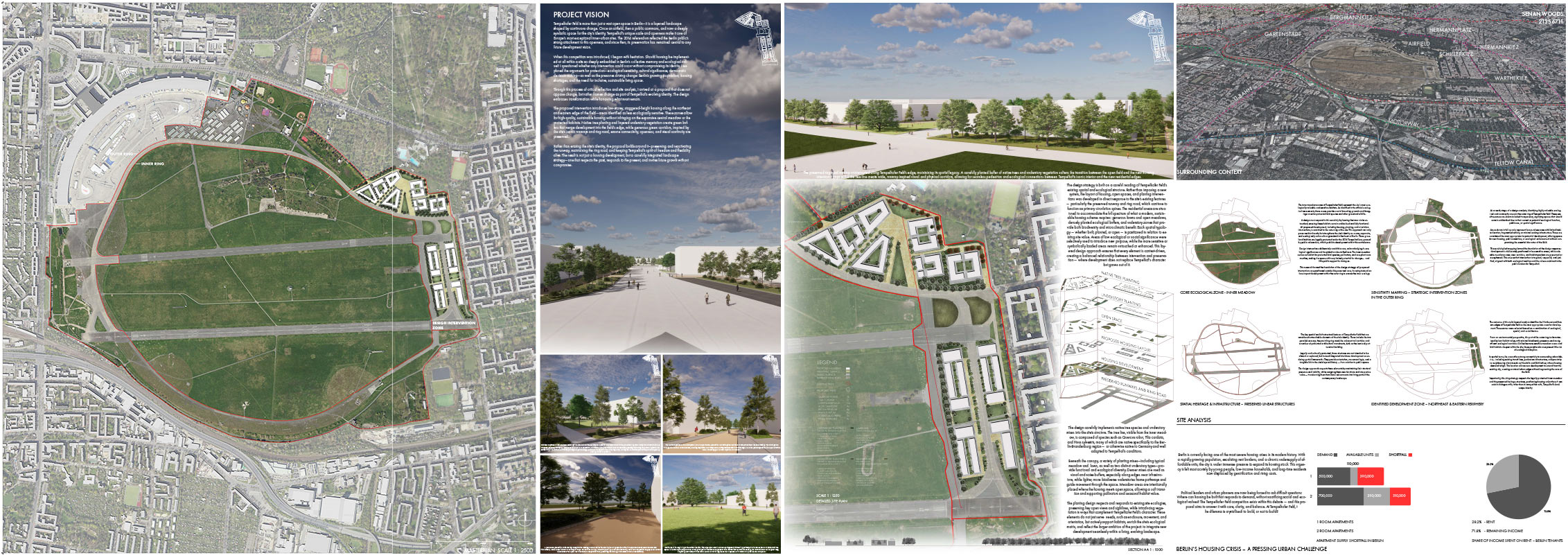



Tempelhofer Feld is one of Berlin’s most iconic and politically significant public spaces. Once an airport and now a vast open public space, it represents freedom, memory, and ecological potential for the city. At the same time, Berlin faces an escalating housing crisis, with demand for affordable units far exceeding supply. This project explores how housing can be sensitively introduced to help solve urban challenges without undermining the identity and values that make Tempelhof unique.
Through detailed site analysis, the project identified areas of high ecological and spatial sensitivity, such as the protected inner meadows and core habitats, which remain untouched. Important existing structures, including the two runways, the historic ring road, and the preserved rail corridor, were mapped and respected, ensuring that development would work with, not against, the site’s history.
The northeast and east edges of Tempelhofer Feld were identified as the most appropriate locations for intervention:
The proposed development introduces low-storey, staggered-height residential blocks (4–5 storeys) inspired by sustainable examples like Berlin’s Schumacher Quartier. The layout maintains wide, open corridors, referencing the scale and linear character of the existing runways and circulation routes. Landscape integration plays a central role:
Ultimately, the project proposes a "win-win" solution — carefully accommodating new housing where appropriate. It has always been a space of continuous change and adaptation — from farmland to airfield to public commons. This project continues that evolution, offering a future where careful growth reinforces, rather than erases, the field’s extraordinary story.